This website uses cookies so that we can provide you with the best user experience possible. Cookie information is stored in your browser and performs functions such as recognising you when you return to our website and helping our team to understand which sections of the website you find most interesting and useful.
Subjects
Design Technology
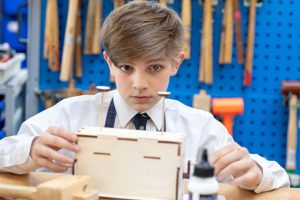 The new SciTech space will put the design technology workshops at the heart of the new building. It will provide pupils with the opportunity to leverage increasingly sophisticated resources, including state of the art dedicated teaching and making environments.
The new SciTech space will put the design technology workshops at the heart of the new building. It will provide pupils with the opportunity to leverage increasingly sophisticated resources, including state of the art dedicated teaching and making environments.
Possibly the most exciting aspect of the new space is that our pupils will now be able to draw on additional disciplines such as mathematics, science, engineering and computing. By having these subjects side by side, pupils will be able to understand how the knowledge gained from one discipline can be used creatively in another.
The new designated makerspace will also provide an interdisciplinary safe working environment that has access to a range of computer aided manufacturing equipment away from the hustle and bustle of our main workshop.
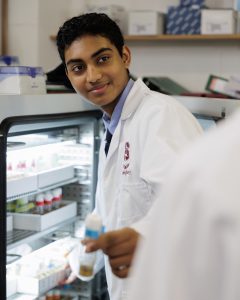
Stan-X
The aim of the Stan-X program is for Lower Sixth pupils to generate unique fruit fly strains using the StanEx1 P-element. This course will take place in a high-tech laboratory in the new SciTech building, working in collaboration with Stanford University and other schools globally, from New Hampshire to Tokyo.
Pupils will sequence their new strains, use advanced microscopes to analyse gene expression patterns, and present their findings to peers and Stanford University academics at the International Fly Conference. Some students from this course have been acknowledged as co-authors in scientific publications. The fly strains created in the course will be characterised and then stored at the Bloomington Drosophila Stock Center at Indiana University in the US, where it will be available for use by laboratories worldwide for research purposes.
Astrophysics and Science
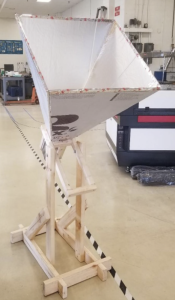 The Astrophysics pathway offered in Year 9 provides pupils with the opportunity to learn and study astrophysical and physics concepts beyond the traditional IGCSE physics specification. Topics like Cosmology, Evolution of Stars, Einstein’s Special Theory of Relativity, Gravitation and Quantum Physics represent a sample of what pupils study. There is also a practical element within the course whereby pupils learn how to use telescopes, track stars and take images of them. The course allows pupils to explore innovative concepts and how these can be applied in the study of our universe.
The Astrophysics pathway offered in Year 9 provides pupils with the opportunity to learn and study astrophysical and physics concepts beyond the traditional IGCSE physics specification. Topics like Cosmology, Evolution of Stars, Einstein’s Special Theory of Relativity, Gravitation and Quantum Physics represent a sample of what pupils study. There is also a practical element within the course whereby pupils learn how to use telescopes, track stars and take images of them. The course allows pupils to explore innovative concepts and how these can be applied in the study of our universe.
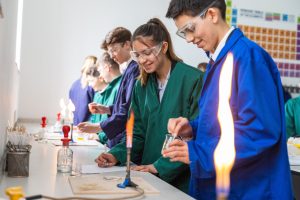
The new SciTech building takes this advanced science pathway to the next level where there is the opportunity to conduct major astrophysics research projects in Year 10 and the Sixth form. The research arm of SciTech has labs and spaces which are conducive in helping pupils design both Newtonian and Radio Telescopes.
The Makerspace area in particular, will be essential in allowing both Removes (Year 9) and Middles (Year 10) pupils to design and apply the Optimal Horn Radio Telescope. This radio telescope can analyse the Milky Way Galaxy through detecting 21 cm wavelengths emitted by excited hydrogen atoms. By receiving these signals, pupils can compute both Redshift and BlueShift velocities of different parts of the Milky Way. The number of projects carried out with this type of equipment depends on the pupil’s imagination and motivation. Of course, the Makerspace and general project spaces available in the research building can enhance the collaborative project work carried out in Lower School 1 (Year 7) Science (STEAM Project), and the Year 9 Innovation Course as part of the experiential element of the curriculum.
Computer Science
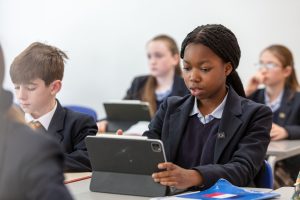 The Computer Science department has devised an entirely new curriculum for September 2023, incorporating the opportunities provided by the SciTech building. In Lower School our pupils will be learning how to code in a variety of programming languages, how computers use ciphers to encrypt information and pupils will visit Bletchley Park to learn about the role of computers in World War 2. Pupils will also design mobile apps and program robotic devices, and this will continue as they progress into Main School, where they will pursue an innovative pathway incorporating Artificial Intelligence, cyber security and advanced app design. All exam classes will benefit hugely from the research space within the new buildings where pupils will pursue units such as bitcoin generation, self-driving cars and robotic design. Finally, our pupils will be involved with the global NuvuX initiative, which supports design, creativity and innovation within schools.
The Computer Science department has devised an entirely new curriculum for September 2023, incorporating the opportunities provided by the SciTech building. In Lower School our pupils will be learning how to code in a variety of programming languages, how computers use ciphers to encrypt information and pupils will visit Bletchley Park to learn about the role of computers in World War 2. Pupils will also design mobile apps and program robotic devices, and this will continue as they progress into Main School, where they will pursue an innovative pathway incorporating Artificial Intelligence, cyber security and advanced app design. All exam classes will benefit hugely from the research space within the new buildings where pupils will pursue units such as bitcoin generation, self-driving cars and robotic design. Finally, our pupils will be involved with the global NuvuX initiative, which supports design, creativity and innovation within schools.

